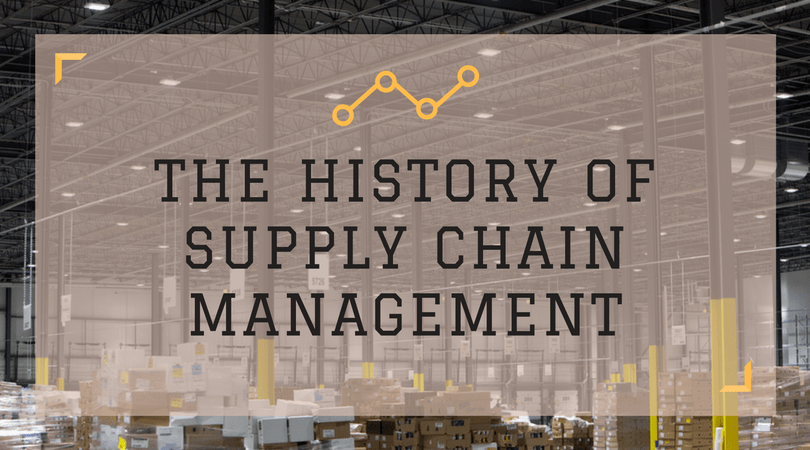Today, supply chain management (SCM) is the oversight of all processes that occur from suppliers to manufacturer to wholesaler to retailer to consumer. It is a complex process that involves a great deal of global networks, but how did we get here? SCM was not always such a vast project. In fact, SCM used to have a basic focus of improving simple, yet labour intensive processes. To understand SCM today, let’s go back through the years to learn how these processes came to be.
The Early Years
The roots of SCM stem from a man named Fredrick Taylor, who wrote The Principles of Scientific Management. This book came out in 1911 and was focused on how to improve individual manual processes. In 1940, the theories from the book were further developed when the importance of process analysis became clear during World War II. Later, in the 1940s and 50s, the focus shifted to the mechanization of processes using systems such as pallets and pallet lifters and later into transportation management where intermodal containers were developed. This marked the birth of the global supply chain.
By the 1960s a trend had emerged that involved more focus on transportation that took less time, such as trucks as opposed to rail. As a result, firms started focusing more on warehousing and material handling in order to speed up their supply chain processes. The main shift, though, came in the 1980s thanks to the rise of personal computers. This opened the door to new technology used in warehouses, creating huge improvements for logistics planning. At this time, there was also research into the automation of material handling and executives began to realize the complexity of the industry.
Globalization and the 21st Century
During the 1990s, the logistics boom continued to thrive, especially due to the introduction of Enterprise Resource Planning (ERP) systems. These helped integrate multiple databases to further organize supply chains. The term “supply chain” finally came into use due to the start of globalization during the mid 1990s, and especially due to a rise in manufacturing in China. At this point, SCM became a large global scale logistical project, involving complex channels that needed constant management.
These days, the shift in technology and communication channels have made automation and material handling a large part of SCM. Due to the nature of the industry, there is now a focus on systems that make these processes more organized. That is why material handling has never been more essential than it is today. As technology and global channels rise, organized supply chains will be crucial for your business too.
_____________________________________________________________________________________________________________________________
References
The Evolution and History of Supply Chain Management. (2015). Transportation Management Company | Cerasis. Retrieved 16 June 2017, from http://cerasis.com/2015/01/23/history-of-supply-chain-management/

